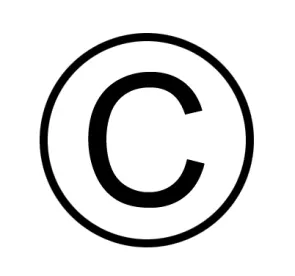The Court of Justice of the European Union (CJEU), Europe’s highest court, has been advised to rule that providing hyperlinks to freely accessible copyright protected content placed on the internet without the author’s consent should not be copyright infringement (GS Media v (1) Sanoma (2) Playboy Enterprises (3) Britt Dekker).
The facts of the GS Media case
Sanoma is the publisher of Playboy magazine. It commissioned photos of Britt Dekker, which were to appear in a future edition of the magazine. In the meantime, the photos were leaked to the website Filefactory.com. GS Media operated a website at Geenstijl.nl and posted hyperlinks on its site to the unauthorised photos on Filefactory.com. Sanoma brought proceedings in the Dutch courts claiming that the provision of the hyperlinks amounted to copyright infringement, relying on Article 3(1) of Directive 2001/29/EC (the ‘Infosoc Directive’). Article 3(1) provides:
“Member States shall provide authors with the exclusive right to authorise or prohibit any communication to the public of their works, by wire or wireless means, including the making available to the public of their works in such a way that members of the public may access them from a place and at a time individually chosen by them.”
The Dutch Court of Appeal asked the CJEU to interpret the scope of Article 3(1).
Svensson
The CJEU has previously interpreted Article 3(1) in the case of Svensson. In that case, it held that providing hyperlinks to freely accessible copyright protected content placed on the internet by the copyright owner or with the copyright owner’s consent would not be copyright infringement. The Court considered what ‘communication to the public’ in Article 3(1) meant. It held that a ‘communication to the public’ required the hyperlink to make the content accessible to a ‘new public’, in other words, people that the copyright owner did not intend to target when initially placing his/her content on the internet. Where the content was freely accessible, there could be no new public. A hyperlink could not make the content accessible to anyone who could not already access it, as the content was already freely available to the world. There would be no ‘communication to the public’ and so no copyright infringement within Article 3(1).
However, where the content was subject to access restrictions (for example, on a subscription only site), providing a hyperlink which allowed those restrictions to be circumvented would be a ‘communication to the public’. The hyperlink would be making the content accessible to people that the copyright owner did not intend to access it. This would be a ‘new public’. Such a communication to a new public would amount to copyright infringement under Article 3(1).
The opinion in GS Media
The CJEU’s ruling in Svensson concerned the legality of hyperlinking to copyright content put on the internet by the copyright owner, or with the copyright owner’s consent (authorised content). The GS Media case concerns hyperlinking to copyright content put on the internet without the copyright owner’s consent or knowledge (unauthorised content), an issue which had not been considered in Svensson.
The CJEU has yet to give its judgment in GS Media. However, what we now have is the opinion of the Advocate General to the CJEU. The Advocate General (AG) acts as legal advisor to the CJEU. In cases where European law is to be interpreted for the first time, or is otherwise complex or contentious, the AG is asked to provide a prior legal opinion on how the law should be interpreted and the decision that he/she thinks the CJEU should reach. The CJEU will consider this prior to handing down its judgment, usually a month or two later. An AG’s opinion is not legally binding and the CJEU is not obliged to follow it, but it does so in the vast majority of cases. An AG’s opinion, therefore, gives us a clue as to the ruling we can expect from the CJEU and, as such, is an important tool in understanding CJEU decisions, particularly as CJEU decisions are often quite short with limited explanation or reasoning given.
The AG’s opinion in GS Media
The AG has advised the CJEU to rule as follows:
– Providing hyperlinks to freely accessible authorised copyright content is not copyright infringement under Article 3(1), unless the hyperlink has the effect of communicating the content to people that the copyright owner did not intend to target when initially placing his/her content on the internet (a new public). However, this would be highly unlikely (or practically impossible) where the content is freely accessible, because it is already available to all. The AG’s reasoning was that providing a hyperlink was not an ‘act of communication’. It did not make the content available to the public (it was already available to users on the internet). As there was no act of communication, there was no ‘communication to the public’ within Article 3(1) either;
– Providing hyperlinks to freely accessible unauthorised copyright content is not copyright infringement under Article 3(1) either, for the same reason as above. This was so regardless of the motives of the person providing the hyperlinks or whether they know that the copyright content has been published without the copyright owner’s knowledge or consent;
– Providing hyperlinks to circumvent restrictions on access to copyright content will be copyright infringement under Article 3(1). The AG’s reasoning was that facilitating the circumvention of access restrictions meant that the intervention of the hyperlinker was vital and indispensable in order for users to benefit from, or enjoy, the copyright content. The hyperlink made the content available to users, when it would otherwise not be. This intervention of the hyperlinker elevated the hyperlink to the status of a ‘communication to the public’ within Article 3(1).
The AG was keen to protect freedom of use of the internet and opined that there were no other circumstances in which providing hyperlinks to unauthorised content should be deemed to be copyright infringement. He said:
“It is a matter of common knowledge that the posting of hyperlinks by users is both systematic and necessary for the current internet architecture. […] I consider that, as a general rule, internet users are not aware and do not have the means to check whether the initial communication to the public of a protected work freely accessible on the internet was effected with or without the copyright holder’s consent. If users were at risk of proceedings for infringement of copyright under Article 3(1) whenever they post a hyperlink to works freely accessible on another website, they would be much more reticent to post them, which would be to the detriment of the proper functioning and the very architecture of the internet, and to the development of the information society. In my view, such interference in the functioning of the internet must be avoided. In any event, I consider that extending the concept of ‘communication to the public’ to cover the posting of hyperlinks to protected works freely accessible on another website would require action to be taken by the European legislature.”
What the opinion means in practice
The opinion is pro-internet user but potentially disappointing for copyright owners who will be unable to take legal action to remove hyperlinks to freely accessible content they own (authorised or unauthorised). Instead, they will have to go against the website on which any unauthorised content appears for copyright infringement. This can be very difficult in practice. The website may be in an unfavourable jurisdiction or the content may not be infringing in the territory in which it is hosted, or the countries at which it is targeted. Also, experience shows that as soon as one website is required to remove infringing content, it inevitably pops up on another.
This opinion also leaves unresolved, as did Svensson, the vexed question of what ‘freely accessible’ means. Content on a subscription only site is unlikely to be ‘freely available’. But what about premium (paid for) content where the link does not strictly circumvent restrictions on access but makes what is normally available for a cost available for free? What about content which can be viewed only where a user has first provided certain personal data? And what about sites that have no technological restrictions on accessing the content but that provide in their terms and conditions that prior consent must be obtained to hyperlink to it? This is an important issue because whether content is deemed to be freely accessible or not will determine whether a copyright owner has a remedy against a hyperlinker.
The practical issues highlighted by the AG on protecting the functioning of the internet may appear sensible but we have seen a similar ‘can’t break the internet’ fear in a number of CJEU rulings. Arguably, the law should not run scared of prohibiting infringements simply because it is common internet practice and may be impractical. Whether linking to freely available unauthorised content should always be considered to be outside the realm of copyright infringement is questionable, particularly where a website links to significant amounts of unauthorised content and has this at the heart of its (potentially profit making) business model.
Perhaps a better approach would be to require the person providing links to unauthorised content to remove them following notification by the copyright owner; in other words, making the intermediary liable in respect of the infringing content where it is not possible to go against the host of the infringing content itself. The AG suggests that such an approach would require legislation but the CJEU has not held back from significantly developing the law in other areas without waiting for legislation to be enacted (the law on parallel imports and packaging would be an example).
However, the CJEU has yet to give its judgment. We await that with anticipation and will post further at that time.




 />i
/>i

